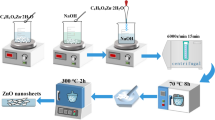Abstract
In this paper, two kinds of one-dimensional (1D) silicon carbide (SiC) fillers, including silicon carbide whiskers (SiCw) and silicon carbide nanowires (SiCn) were filled into silicone rubber (SiR), respectively. The effect of 1D-SiC fillers on the microstructure and electrical, thermal, and mechanical properties of the SiCw/SiR and SiCn/SiR composite dielectrics have been systematically studied. The results show that the SiCn/SiR composites exhibit excellent nonlinear conductivity and thermal properties as compared to the SiCw/SiR composites due to the relatively large length−diameter of SiCn, with a maximum nonlinear coefficient and thermal conductivity of 0.69 and 0.229 W/(m·K), respectively and stronger mechanical property. However, the DC breakdown strength degrades seriously with the increase in the 1D-SiC filler content. The measuring temperature also has a significant effect on the DC conductivity and DC breakdown strength properties of the SiR-based composite dielectric. Besides, the internal electric field of the cable accessories was simulated using COMSOL Multiphysics software and the results verify that the use of both SiC/SiR-based composite dielectrics as reinforced insulation significantly homogenized the internal electric field of the cable attachment as compared to SiR, with a reduction of up to 96.75% in the electric field at the root of the stress cone under steady-state conditions.











Similar content being viewed by others
Data availability
The datasets generated during and/or analyzed during the current study are available from the corresponding author on reasonable request.
References
T. Tanaka, G.C. Montanari, R. Mulhaupt, IEEE Trans. Dielectr. Electr. Insul. 11, 5 (2004)
Y. Zhou, S.M. Peng, J. Hu, J.L. He, IEEE Trans. Dielectr. Electr. Insul. 24, 3 (2017)
X.X. Zhou, J. Yi, R.H. Song, X.Y. Yang, Y. Li, H.Y. Tang, Energy 35, 11 (2010)
J. Li, B.X. Du, X.X. Kong, Z.L. Li, IEEE Trans. Dielectr. Electr. Insul. 24, 3 (2017)
B.X. Du, Z.L. Yang, Z.L. Li, J. Li, IEEE Trans. Dielectr. Electr. Insul. 26, 3 (2019)
Y.D. Chen, K. Zhou, X.C. Ren, S.J. Chen, Z.R. Li, Polym. Compos. 41, 9 (2020)
L. Jin, B.X. Du, X. Hang, IEEE Trans. Dielectr. Electr. Insul. 24, 3 (2017)
C. Dang, D. Fournier, IEEE Trans. Power Deliv. 12, 1 (1997)
Y. Luo, Z.Y. Han, M.Y. Zhou, H.T. Wang, Energies 13, 11 (2020)
T. Christen, L. Donzel, F. Greuter, I.E.E.E. Electr, Insul. Mag. 26, 6 (2010)
Z.H. Yang, P.H. Hu, S.J. Wang, J.W. Zha, Z.C. Guo, Z.M. Dang, IEEE Trans. Dielectr. Electr. Insul. 24, 3 (2017)
H.C. Liang, B.X. Du, J. Li, Z.L. Li, A. Li, IET Sci. Meas. Technol. 12, 1 (2018)
L. Donzel, F. Greuter, T. Christen, I.E.E.E. Electr, Insul. Mag. 27(2), 18–29 (2011)
Z.L. Li, Z.R. Yang, B.X. Du, IEEE Access (2018). https://doi.org/10.1109/ACCESS.2018.2889343
N.Q. Shang, Q.G. Chen, X.Z. Wei, Materials 11, 3 (2018)
Z.L. Li, B.X. Du, Z.R. Yang, J. Li, IEEE Trans. Dielectr. Electr. Insul. 24, 4 (2017)
Q.G. Chi, Z. Li, T.D. Zhang, C.H. Zhang, IEEE Trans. Dielectr. Electr. Insul. 26, 3 (2019)
B.X. Du, C. Han, Z.L. Li, IEEE Trans. Dielectr. Electr. Insul. 28, 3 (2021)
X.L. Zhao, X. Yang, J. Hu, Q. Li, J.L. He, Compos. Sci. Technol. (2019). https://doi.org/10.1016/j.compscitech.2019.03.018
J.J. Park, J.Y. Lee, Trans. Electr. Electron. Mater. 21, 1 (2020)
S. Boggs, D.H. Damon, J. Hjerrild, J.T. Holboll, M. Henriksen, IEEE Trans. Power Deliv. 16, 4 (2001)
T.T.N. Vu, G. Teyssedre, B. Vissouvanadin, S.L. Roy, C. Laurent, IEEE Trans. Dielectr. Electr. Insul. 22, 1 (2015)
L. Gao, X. Yang, J. Hu, J.L. He, Mater. Lett. (2016). https://doi.org/10.1016/j.matlet.2016.02.016
J. Su, J. Zhang, Appl. Surf. Sci. (2016). https://doi.org/10.1016/j.apsusc.2015.10.156
H.J. Choi, J.G. Lee, Ceram. Int. 26, 1 (2000)
J.L. Kuang, W.B. Cao, J. Am. Ceram. Soc. 96, 9 (2013)
Y.F. Zhang, X.D. Han, K. Zheng, Z. Zhang, X.N. Zhang, J.Y. Fu, Y. Ji, Y.J. Hao, X.Y. Guo, Z.L. Wang, Adv. Funct. Mater. 17, 17 (2007)
Q.G. Chi, S. Cui, T.D. Zhang, M. Yang, Q.G. Chen, IEEE Trans. Dielectr. Electr. Insul. 27, 2 (2020)
R. StruMpler, J. Glatz-Reichenbach, J. Electroceram. 3, 4 (1999)
Y. Ando, T. Itoh, J. Appl. Phys. 61, 4 (1987)
B.X. Du, Z.L. Li, Z.R. Yang, IEEE Trans. Dielectr. Electr. Insul. 23, 5 (2016)
C.Y. Liu, X.Q. Zheng, P. Peng, IEEE Trans. Plasma Sci. 43, 10 (2015)
X. Wang, J.K. Nelson, L.S. Schadler, IEEE Trans. Dielectr. Electr. Insul. 17, 6 (2010)
L.N. Ho, H. Nishikawa, T. Takemoto, J. Mater. Sci-Mater. El. 22, 5 (2011)
P.P. Budenstein, IEEE Trans. Dielectr. Electr. Insul. 15, 3 (1980)
M.G. Danikas, T. Tanaka, IEEE Electr. Insul. Mag. 25, 4 (2009)
S.Y. Yu, H. Ishii, K. Tohgo, Y.T. Cho, D.F. Diao, Wear 213, 1 (1997)
Y. Peng, Z.J. Peng, X.Y. Ren, H.Y. Rong, C.B. Wang, Z.Q. Fu, L.H. Qi, H.Z. Miao, Int. J. Refract. Met. H. (2012). https://doi.org/10.1016/j.ijrmhm.2012.03.008
L. Qiao, K.L. Zhu, H.S. Tan, X. Yan, L.H. Zheng, S.H. Dong, Mater. Res. Express. 8, 4 (2021)
Acknowledgements
This work was supported by the National Natural Science Foundation of China (Nos. U20A20308, 51977050, 52007042), Natural Science Foundation of Heilongjiang Province (No. TD2019E002), China Postdoctoral Science Foundation (Nos. 2021T140166, 2018M640303), Youth Innovative Talents Training Plan of Ordinary Undergraduate Colleges in Heilongjiang (No. UNPYSCT-2020178, UNPYSCT-2020180).
Author information
Authors and Affiliations
Contributions
All authors contributed to the study conceptualization, methodology, preparation, investigation, data analysis, writing original draft, reviewing and editing.
Corresponding author
Ethics declarations
Conflict of interest
There are no conflicts to declare.
Additional information
Publisher's Note
Springer Nature remains neutral with regard to jurisdictional claims in published maps and institutional affiliations.
Supplementary Information
Below is the link to the electronic supplementary material.
Rights and permissions
Springer Nature or its licensor holds exclusive rights to this article under a publishing agreement with the author(s) or other rightsholder(s); author self-archiving of the accepted manuscript version of this article is solely governed by the terms of such publishing agreement and applicable law.
About this article
Cite this article
Chi, Q., Fang, H., Meng, Z. et al. Improved electrical, thermal, and mechanical properties of silicone rubber-based composite dielectrics by introducing one-dimensional SiC fillers. J Mater Sci: Mater Electron 33, 21336–21350 (2022). https://doi.org/10.1007/s10854-022-08928-w
Received:
Accepted:
Published:
Issue Date:
DOI: https://doi.org/10.1007/s10854-022-08928-w




